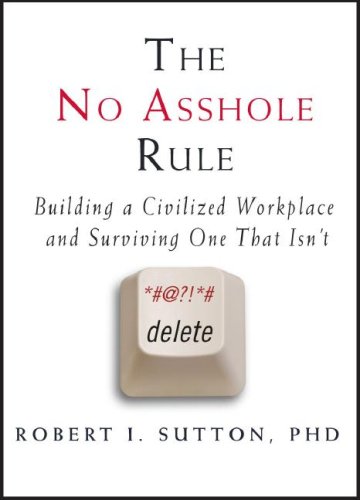Key Points from the Book Good to Great on the Principle of First Who, Then What
- With any team, organization, or company Good to Great found that it is more important to get the right people on board than it is to decide what they are going to do. Once you get those people on board, then you can decide where to take the organization. Yes, I know this is counter intuitive.
- The “right people” has more to do with character and innate capabilities than knowledge, background, skills, or experience. The right people have passion and want to work hard.
- Collins compares this to a bus. Great companies from his study focused on getting the right people on the bus, in the right seats, and then decided where to go. Not the other way around.
- When you decide where to go first and then try to put the people on the bus, the data Collins gathered demonstrated a higher rate of turn over for these types of companies. Prioritizing “who” over the “what” provided a greater rate of success.
- When entering a new organization in a leadership role it’s important to see if everyone who works for you should even be on your bus and then decide if they are in the right seats. If they aren’t in the right seat, move them. If they shouldn’t be on the bus, have the integrity to get them off the bus. Just because they’ve sat on the wrong bus for so long or in the wrong seat doesn’t mean you should should keep letting them sit there heading in the wrong direction.
- When you have the right people in the right seats, money no longer is the motivation for employment – it retains people. The right people don’t need motivation. These types of people are there because they love the work and have the right character for the job. If they’re there for the money, they are not the right kind of people.
This Principle From Good to Great Changed My Perspective
I’ll admit that a few years ago, before I became familiar with this principle from Good to Great, I had a very strong opinion that people should not be hired into certain jobs if they did not have the exact background to match the job description. I felt, if you didn’t come to the table with a loaded resume and extensive expertise in a related field, you shouldn’t be hired. That was misguided and proud.
At one point I worked with someone who, come to find out, didn’t hit all the usual wickets for their job description, in my opinion. Not only did reading about this principle change my perspective, this guy did. He showed that he had passion, a strong work ethic, and a willingness to sacrifice for the team. His character made him worthy of the job. As a result of his innate capabilities, he took on a leadership role and gained experience leading a team that I missed out on and experience I now envy. His passion and work ethic far outweighed his resume.
On the flip side, I have also worked with many people who have been hired primarily because of their resume. Their experience and what they looked like on paper qualified them for the job, but they were also horrible people to work with. They ruined the work place and stopped our bus from going anywhere. Some of these people only needed a new seat on the bus. Others should have been thrown off the bus entirely.
Now I get it. Great organizations hire people for their character, passion, work ethic, and legitimate references – not because of a bloated resume. People can learn and be taught processes or how to make a product, but it’s a lot harder to teach someone valuable traits like passion, kindness, hard work, patience, humility, and honesty.
However, let me be clear. I recognize there are fundamental skills that must be in place when it comes to creating a great organization. A person should obviously know how to read, write, add and subtract in general no matter what the job is. If we’re talking about a specialized position, there is likely key knowledge required for the job. My point is, when it comes down to making a decision between someone who has a weighted resume against the really nice person with a less bloated resume, someone who’s coworkers and boss have nice things to say, choose the really nice person over the well-written resume. They’ll likely be a lot more pleasant to work with too.
The No A-hole Rule
The no A-hole rule is a perfect example of first who, then what. This principle, which comes from the book The No A–hole Rule: Building a Civilized Workplace and Surviving One That Isn’t, suggests that no matter how much experience or expertise a person may bring to the table, if that person is an A-hole, don’t hire them. If you have an amazing team and everyone is working together in a phenomenal way, don’t ruin the Zen by bringing in an A-hole, no matter how good that person looks on paper. The trick to figuring out if this person would ruin your team is easy – check the “hallway file.” That’s what people in the hallway have to say about that person.  Ask for references and call them. Call the previous boss, ask why they left their previous job and want this one. I think this question is one of the most important questions an employer could ask because it’s an indicator how a candidate could leave your group if hired. If a candidate for your organization is leaving a previous job because they didn’t play well with others, didn’t like the job, or is leaving on bad terms, those reasons could very likely follow this person to your organization. It’s not hard, but some employers don’t seem to check the hallway file. And sometimes, a hiring board just wants to check the box and get a butt in a seat, which is one of the worst ways an organization could go about hiring.
Ask for references and call them. Call the previous boss, ask why they left their previous job and want this one. I think this question is one of the most important questions an employer could ask because it’s an indicator how a candidate could leave your group if hired. If a candidate for your organization is leaving a previous job because they didn’t play well with others, didn’t like the job, or is leaving on bad terms, those reasons could very likely follow this person to your organization. It’s not hard, but some employers don’t seem to check the hallway file. And sometimes, a hiring board just wants to check the box and get a butt in a seat, which is one of the worst ways an organization could go about hiring.
Questions to Consider for Comments
Have you been a part of successful organizations that have thought first who, then what? What were they like?
Have you been a part of organizations that haven’t thought of first who, then what? What was that like?
How can you help the organization you’re a part of that may have the wrong people in the wrong seats?








Good stuff. I’ve always believed that degrees don’t necessarily make a person but that a person makes the degree. I’d rather work with a hardworking, intuitive, and quick to learn than a lazy “I have a higher degree than you” type of person.
Sea Grant is a great organization. It’s not the highest paying and so attracts people with more passion for the work than for the money. Granted, I don’t work closely with all Sea Grant folks I’ve worked with. Particularly not day-to-day type of work. But they all are driven by projects they come up with on their own with little supervision and have been a joy to work with.
I’m currently in another organization that has selected people for their expertise and social and political positions. This has lead to high turnover and difficulty moving the bus. There has been a lot of blaming for work not done along with difficulty determining roles. When one person decides they don’t want to pull any weight, other fence sitters fall in that same direction. Difficult.
I was nodding my head throughout your whole synopsis. Collins seems pretty wise. I think the answer to your last question is worth a million dollars. Sadly I don’t have it. I guess if we show love first and correction second, it would be easier to help correct the direction of the bus or get some passengers off.
One answer to that question I think is to not let the annual or semiannual performance review be the first time they hear about a performance problem. Again, it comes down to love being the answer. Have enough genuine concern for your people to spot a problem and point it out in a way that helps them meet it, instead of brining it up at the end of the year and telling them they suck.
I just finished reading Losing It where the author says the same thing. Great leaders fire well. They’re not mean or hateful. Dave Ramsey described it very well also in Entreleadership. Changing someone’s seat on the bus or kicking them off all together can often be a relief to that person and bring a collective sigh from the team. Everyone will wonder, what took so long?!!
it would be nice to have a mentor model that skill set: the ability to remove people and still make them feel positive.